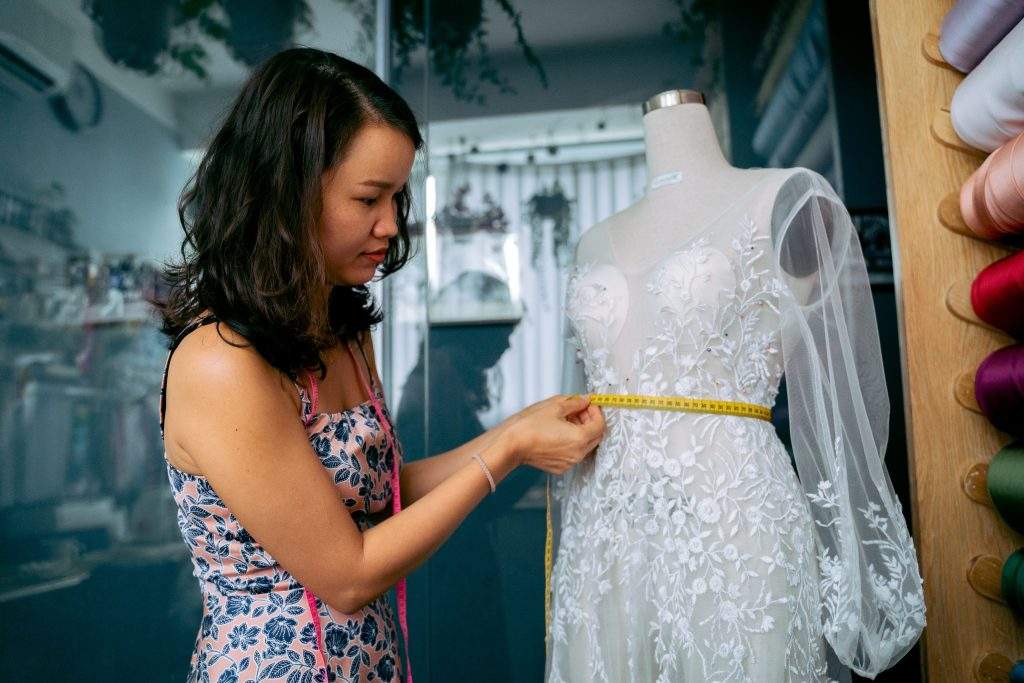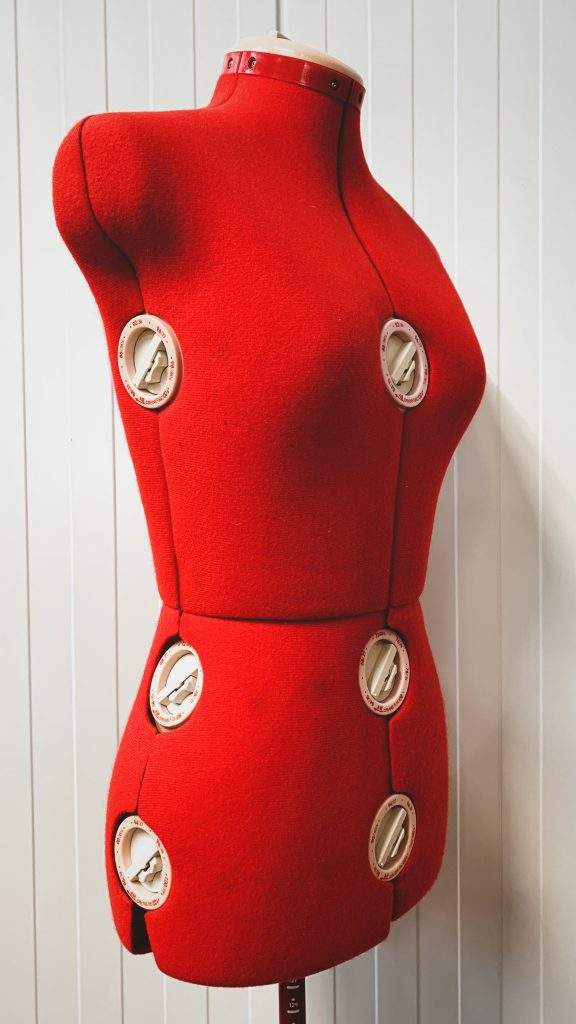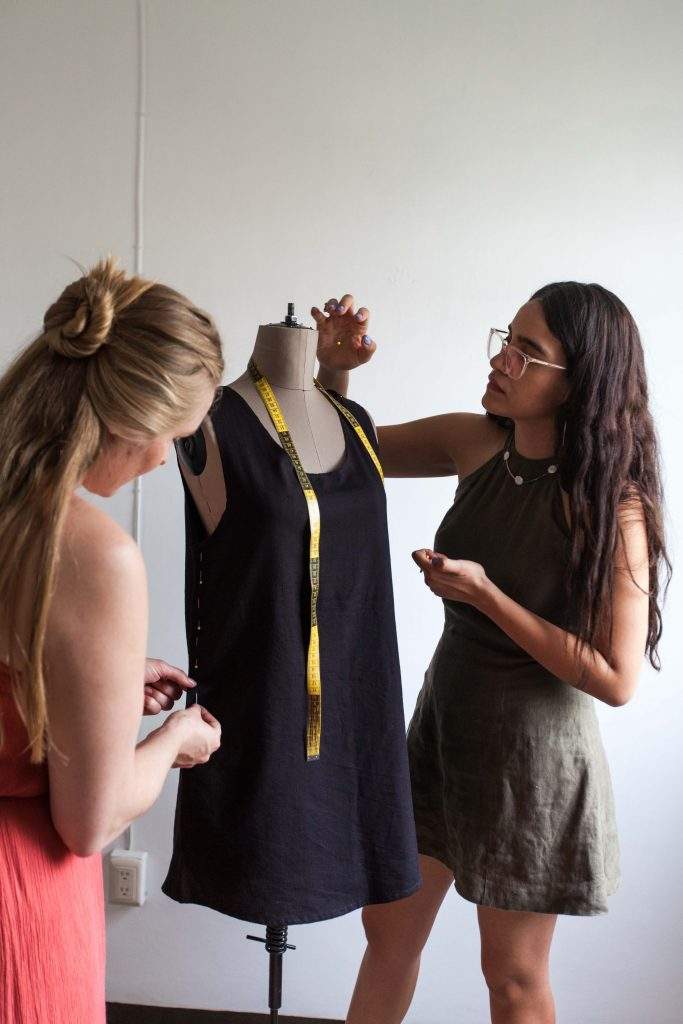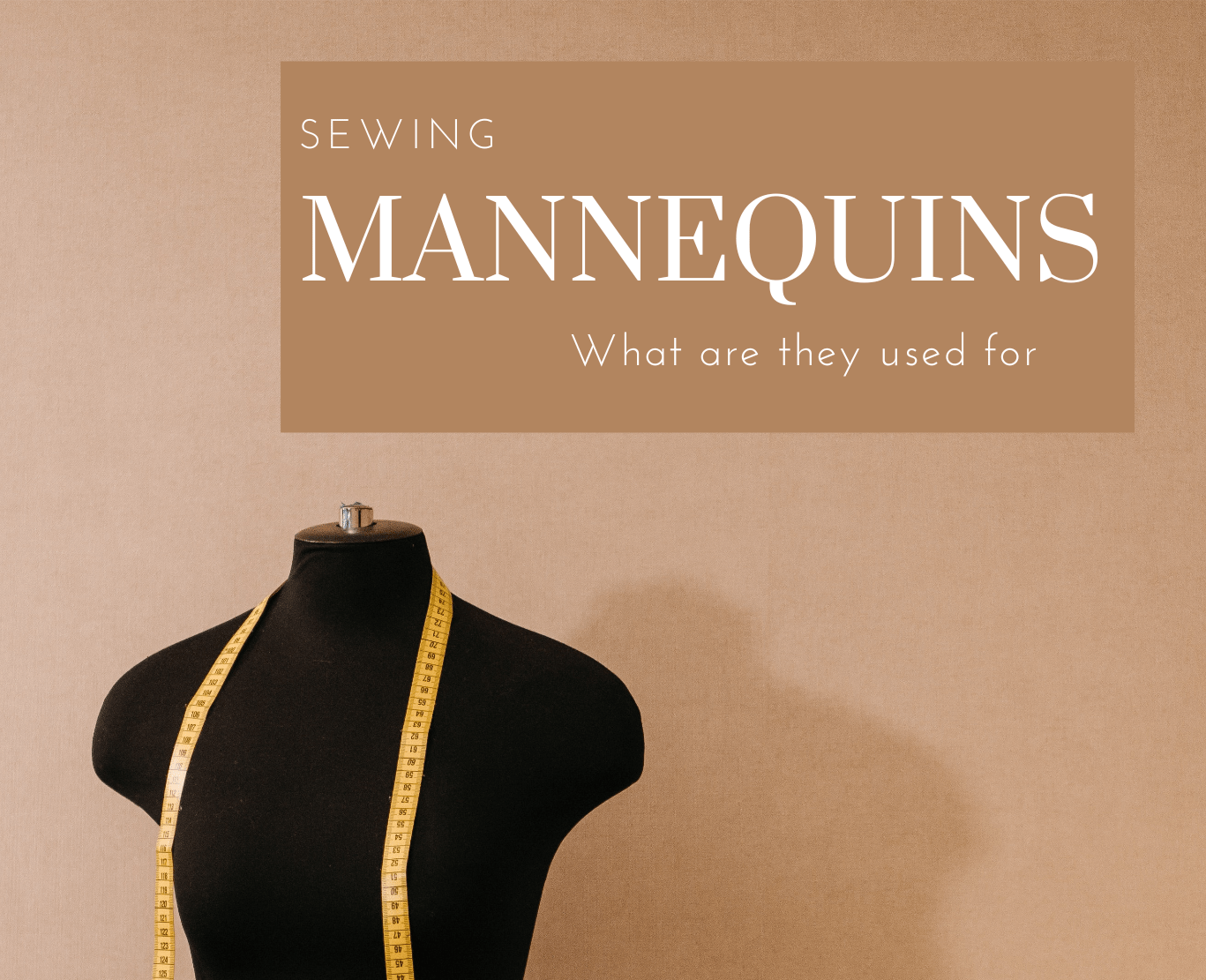A mannequin, is a type of doll or human shaped model that is used by tailors, designers and dressmakers to help correctly fit clothes. Sewing mannequins are specially made to help fit your creations and have different characteristics and are often adjustable. They are sometimes used for simply displaying clothes as well, the dolls you see in normal stores are a form of mannequins. In this post we will go through what types of mannequins and what the use cases for them are.
What are sewing mannequins called?
They have many different names and are often referred to as as a manikin, lay figure, dress form or simply a dummy, but all have essentially the same function with some small differences. The more correct way of addressing the mannequins used specifically for sewing is Dress forms and both amateur sewers and fashion designers adhere to this norm.
What is the difference between mannequin and dress form?
This question comes up very often and even though it seems like mannequin and dress form is used interchangeably there are some differences. Dress forms are most often used to simulate the torso of a body with hips and upper leg regions, but typically without crotch separation. They are typically built with a firm inner and a foam or cloth outside that is useful for pinning. A mannequin, is often a much more stylised dress form that is utilised for displays in retail stores. These mannequins typically are built with a hard outer shell and often depicts a full body. There are also body part mannequins as well, from hands to exhibit rings and bracelets to heads to display headgear.

What is a sewing mannequins used for?
Mannequins may be useful for many things sewing related, such as to help with fitting, draping, and making patterns. They can be a great help when working on clothes and you don’t and you to keep trying your creations on to see if they fit. If working on clothes for other people and you have an adjustable dummy it is easy to set it to their size and help as you work. They really are a fantastic investment for anyone who like to make their own creations. We have a list of our favourite mannequins that you can read here: Five Best Dressmakers Dummies.
What to consider when buying a sewing mannequin
It’s crucial to think about the usage you want a mannequin for when you’re ready to purchase one. If you purchase a mannequin without considering how you want to use it, you’ll probably find that it is insufficient for your requirements and will get disappointed. Make sure to consider the adjustability, portability, shape and size of the mannequin.
Are the size adjustable mannequins?
Yes, there are many mannequins on the market today that are fully adjustable, this means you can increase or decrease the dummy in shape depending on what sized clothing you are making. With adjustable dress forms, you may change the length of the torso and expand or shrink the body’s circumference in various body parts. This is great as it gives you greater control over the specific measurements such as bust, waist and hips. If you are are like me who make clothing for friends of many different sizes an adjustable mannequin is ideal.

Are there portable sewing mannequins?
Yes, they are portable however, you would not want to move them around frequently. Many mannequins have three legs for “feet” that are perfectly sturdy but can be hard to get situated again when you move the mannequin. There are also mannequins with fixed stands that are more rigid, however these are harder to moved around.
What shapes and sizes does sewing mannequins come in?
Sewing mannequins just like clothes, come in many different sizes from XS to XL. Getting the sizing correct is crucial as bigger sizes cannot simply be changed to a smaller size or the other way around. Since every human body is unique in terms of proportions and form and it can be hard to find a mannequin that fits your exact measures. It would be a shame to spend money on a mannequin and later realise the sizing is wrong. This is why we recommend getting an adjustable mannequin so you can tweak the settings as you go along. You must also consider if you want a male or female mannequin. There are some gender-neutral mannequins, however they may still have the characteristic men or women body type. We also have a post on male mannequins you can read.
Types of Sewing Mannequins
There are many sewing of different shapes and sizes, with or without moving joints. When purchasing a dress form, it is important to first determine its intended use. Mobile mannequins are becoming more and more popular as well due to being more versatile, yet they have some drawbacks compared to the more stationary mannequins. The most common kind is the display form, which may be used for fabric samples or patterns and is designed mirror a real persons body. Below is a brief overview of the different types of mannequins used for sewing.
Display dress form
These are the most basic version of sewing mannequins, they are simple to pin, however the proportions of these forms are frequently impractical for fitting and draping. Display forms are typically less than $100 and are widely accessible online.

Adjustable Mannequins
The fundamental advantage of an adjustable mannequin over fixed models is the degree of flexibility it provides. In addition to being lighter than a professional mannequin and having a somewhat more realistic body shape, they often incorporate a tripod base that enables the height to be altered. Despite having more realistic dimensions, they are typically lightweight like exhibition forms. The benefit of these forms is that they are often less expensive than professional forms. A hemming tool that is connected to the adjustable height pole is commonly included with them, and some of them can also fit trousers and shorts. In contrast to professional forms, they are not as sturdy, the shoulders cannot be compressed, the structure cannot be readily squeezed, and they are not as suited for draping. The doll’s dials enable you to adjust the mannequin’s size so that its body form will better match the available space. The problem is that the panels begin to split apart as soon as the dials are turned, creating holes at the seams. As a consequence, it can be hard to pin the waist, the centre of the front, and many other important marking areas. Furthermore, it might be difficult to shape these forms to your exact proportions since they can only be altered so much. This suggests that you may not be able to enlarge the bust enough to fulfil your demands, for instance, if your bust is much larger than your waist.
Bifurcated Mannequins
With a bifurcated dress form, the legs are also present in addition to the torso. Anyone who takes design seriously will value the ability to make and fit trousers using a bifurcated dress form. Professional dress forms are more costly, but bifurcated forms are more useful. The main difference is that they have legs to accommodate shorts and pants. If you wish to drape any of these items or if you make many pant fits, these form types are really useful. You should also consider whether or not you want arms on your dress form. A dress form with arms will be useful if you undertake a lot of draping and/or pattern work, like before. Many businesses provide dress forms with magnetic arms that may be removed and re-attached as necessary.
Custom Mannequins
A customised dress form is also known as a made-to-measure dressmakers dummy. They are often not customisable and produced using the measurements of your body that you may have provided to the company or that were obtained during a scan. These mannequins are offered by a number of companies online.
Professional Mannequins
Professional dress forms, for instance, have more accurate proportions and a range of sizes. A professional dress form is an investment that any fashion designer should make, but students should invest in one in particular. A professional form may be readily pinned if you know how since it is manufactured to a certain size, often with a fiberglass inside form covered in a thin layer of padding, and an outer made of tightly woven fabric. If you need assistance with draping, pinning, fitting, or any other step of the construction process, investing in a professional dress form is well worth it. These forms often cost much more but their features and longevity far above those of standard display types. Professional dress forms, for instance, offer more precise measurements and are available in several sizes. Additionally, they include wheels for easy mobility, a bottom that resembles a cage to help with hemming, folding shoulders for easy on and off, and an adjustable height.
Display Mannequin
A show mannequin is used to demonstrate and display clothing rather than being utilized for sewing. This is because there is no padding; thus, pins cannot be used on this kind of mannequin. They are perfect for designers who want to display their clothing in a store or in their design office because they are also offered in predetermined sizes and frequently have movable limbs.
